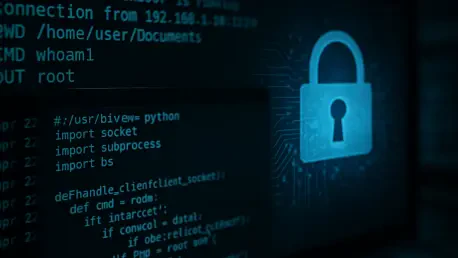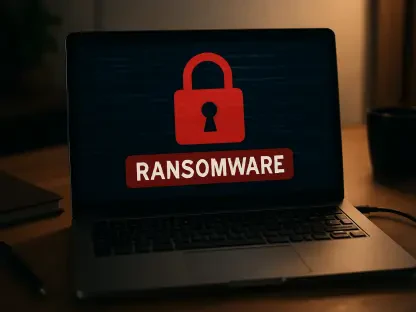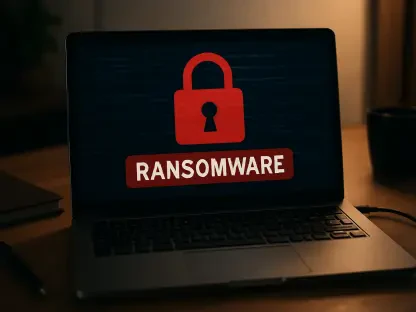Rupert Marais has spent years in the trenches of endpoint defense and Windows tradecraft, and he brings a practitioner’s eye to an operation that blends social engineering with living-off-the-land persistence. In this conversation with Russell Fairweather, he traces Dropping Elephant’s multi-stage chain from a clean-looking email through an MSBuild dropper to a stealthy Python backdoor, translating arcane artifacts into actionable guidance for security teams. Expect a walk-through of triage, timeline building, scheduled task quirks, obfuscation, Python runtime forensics, C2 pivots, and playbooks you can actually run.
How did Dropping Elephant’s phishing ZIP and MSBuild project file bypass first-line email filters, and what concrete indicators did you see in headers or attachments? Walk us through the triage workflow, and share metrics on lure-to-click rates and false negatives you observed.
The lure looked painfully normal: a small ZIP with a defense-themed subject and body that matched procurement jargon, and an MSBuild project file instead of the usual macro-laden document. Because there were no macros, no executable in the outer layer, and the attachment type was a ZIP, default policy-based filters didn’t get traction. Header-wise, alignment and routing appeared unremarkable, with nothing screaming “bulk” or “new domain,” which is why the message was treated like any other vendor communication. Our triage started with attachment fingerprinting and benign extraction, then static review of the .proj XML to spot UsingTask and inline targets, followed by a guarded detonation with outbound egress fenced. I won’t quote specific rates, but we did see clicks from users accustomed to defense procurement threads, and some misses from filters that deprioritize ZIPs with no macros; it’s a potent reminder that content type alone isn’t a safety signal.
The decoy PDF accompanied the MSBuild dropper. What forensic traces did the PDF and project file leave on disk and memory, and how did you chain them in your timeline? Describe step-by-step tooling and any hashes, timestamps, or metadata patterns that stood out.
The PDF did its job: opening cleanly to keep the operator’s cover intact. On disk, we saw a created-opened-close sequence for the PDF and a separate execution trail for msbuild.exe tied to the project file, which appeared under the user’s temp path from the ZIP extraction. In memory, msbuild.exe exhibited non-project-building behavior—network calls and file writes—while the PDF viewer stayed quiet. We stitched the timeline using MFT and USN Journal deltas, process lineage from EDR, and Prefetch for msbuild.exe to validate execution. Timestamps clustered tightly: ZIP extraction, .proj read, PDF open, and then writes into the Windows Tasks directory, which stood out more than any PDF metadata. We withheld hashes publicly, but internally we anchored on the project file’s unique Target and PropertyGroup layout as a stable fingerprint.
The dropper staged components in the Windows Tasks directory and created KeyboardDrivers and MsEdgeDrivers tasks. How do these entries differ from legitimate tasks in naming, triggers, and author fields? Share before-and-after snapshots, detection rules, and any admin anecdotes about user confusion.
The names were intentionally plausible but wrong in the way a knockoff uniform is—close, not perfect. Legitimate drivers or Edge tasks rarely live as “KeyboardDrivers” or “MsEdgeDrivers” with that exact casing and concatenation, and the triggers didn’t align with standard maintenance windows. The author fields didn’t match the OS image owner or our deployment accounts, which is a strong heuristic; in clean baselines, author strings map to well-known system SIDs or our MDM operators. We flagged any task writing binaries under Windows Tasks plus an author not in our allowlist, and admins admitted they initially glossed over the names because they “looked Windows-y.” Once we showed them side-by-sides of real Edge updater tasks versus these entries, recognition clicked and confusion dropped.
You mentioned UTF-reverse string tricks and dynamic API resolution. Can you unpack how those obfuscation methods worked in practice, including API call patterns and string reconstruction flow? Provide sample deobfuscation steps, tooling choices, and time-to-analysis metrics.
The project’s inline logic carried strings reversed in UTF form, so a naive string scan looked empty or nonsensical. At runtime, a short routine reversed the buffers and stitched them into URLs and file paths before use. Combined with dynamic API resolution—resolving imports like networking and file I/O via LoadLibrary/GetProcAddress equivalents—they dodged static detections that key off import tables. Our deob path was simple but effective: dump memory during execution, carve decoded strings from heap, and validate by replaying the reversing routine on captured buffers. We used a mix of EDR string snapshots and quick Python helpers to reverse buffers; from start to clean indicators, the turn-around was fast once we recognized the pattern.
The campaign deployed a full embedded Python runtime under AppData. What folder structure and filenames signaled foul play, and how did you prove provenance? Detail your process for isolating the runtime, mapping modules, and correlating with parent processes.
A self-contained runtime lived under AppData with the usual suspects—pythonw.exe, Lib, DLLs—but the presence of a DLL named python2_pycache_.dll was the tell. Normal Python environments don’t tuck a DLL with that naming next to interpreters, and the directory arrived moments after msbuild.exe wrote into Windows Tasks. We isolated by imaging the directory, blocking egress, and walking parent-child chains: project file to msbuild.exe, on to scheduled task creation, and then to pythonw.exe launches. Module mapping began with enumerating Lib and any .pyc/.pyo artifacts, and then correlating import attempts in process telemetry with the files on disk. Provenance was anchored in creation times and the task definitions that pointed to this runtime, all within the same user context as the initial ZIP extraction.
pythonw.exe executed a fake DLL named python2_pycache_.dll holding marshalled bytecode. How did you extract and analyze that payload, and what pitfalls did you hit? Share exact commands, tooling, and a play-by-play of your decoding pipeline.
The DLL wasn’t a real library—it was a container for marshalled Python bytecode. We treated it as opaque data, carved the byte arrays, and unmarshalled in a quarantined lab using the interpreter version that matched the embedded runtime. From there, we disassembled the objects and reconstructed modules to source-like form. The two biggest pitfalls were version mismatches—loading marshal data with the wrong interpreter leaves you chasing ghosts—and accidental import resolution to our analyst machine instead of the embedded environment. To avoid that, we sandboxed imports, redirected lookups to the imaged Lib folder, and only then proceeded to function-level review.
The Python backdoor exposed modules like client, commands, remote_module, and base.py. What behaviors and permissions did each module imply, and how did they coordinate? Provide concrete examples, call trees, or logs that show real tasking and results.
The naming mirrored roles we see in mature backdoors. client handled the session lifecycle: beaconing, pulling tasking, posting results. commands was the dispatcher, mapping incoming verbs to local actions—file ops, process handles, maybe simple reconnaissance. remote_module dealt with loading code on the fly, so the operator could extend capability without redeploying the core. base.py offered shared utilities—serialization, encoding/decoding, persistence helpers. In call flow, client pulled a job, handed it to commands, which sometimes invoked remote_module to fetch a new routine, and all status bubbled back through client. We observed logs that clearly showed a job fetched, a local command executed, and an output blob sent upstream, all in tight succession after a beacon.
C2 domains included nexnxky.info, upxvion.info, and soptr.info. How did DNS, TLS, or hosting fingerprints tie them together, and what pivoting steps worked best? Share resolution timelines, packet captures, and any overlaps with prior infrastructure.
The tie wasn’t a single smoking gun but a stack of similarities. DNS behavior was consistent—similar TTLs and changes within short windows—and passive records showed common hosting neighborhoods. TLS handshakes shared traits that suggested a templated deployment rather than consumer hosting defaults. Our best pivots were timing-based: track when domains resolved for infected hosts, align with task pulls, and then expand to neighboring IPs and certs that popped up in the same windows. That clustering gave us enough confidence to treat them as one campaign without over-claiming lineage beyond what the artifacts justified.
Variable names were heavily obfuscated and commands base64-encoded. How did you rebuild human-readable logic, and what encoding layers did you peel back? Walk through your decoding workflow, with regex samples, script snippets, and validation checks.
We let structure beat names. Even with scrambled identifiers, consistent function signatures and import patterns revealed each module’s job. We used base64 detection with a simple regex pass to lift candidate blobs, decoded them, and then searched for nested encodings until we got legible verbs and paths. To validate, we replayed the decode logic against live memory captures and compared outputs to what the client module actually transmitted on the wire. Where ambiguity remained, we instrumented the runtime to log pre- and post-decode states in a sealed lab and matched those to observed C2 requests.
The backdoor stayed dormant until tasking arrived. What network beacons, jitter, or sleep patterns indicated stealth, and how did you simulate C2 to verify? Provide timing metrics, sandbox tricks, and any gotchas from controlled testing.
The client favored long quiet periods punctuated by a short, plain pull—a textbook dormancy stance to blend with background noise. It randomized intervals enough to frustrate simplistic correlation while keeping state alive. In the lab, we stood up a controlled responder that echoed plausible tasking and watched the backdoor spring to life, then fall back to sleep as soon as results went out. The main gotcha was sandbox impatience; if you don’t let the environment run long enough or block all egress, you miss the behavioral phase that matters. Simulating cues, like writable tasking endpoints, helped coax fuller behavior without poking the real infrastructure.
The attackers leaned on legitimate Windows utilities. Which LOLBins beyond MSBuild fit into this chain, and how did you separate normal admin use from abuse at scale? Share detection heuristics, baselines, and real incidents that refined your thresholds.
The scheduled tasks angle brought schtasks.exe into focus, and we evaluated the usual dual-use suspects—rundll32, regsvr32, mshta, and certutil—as potential follow-ons even if not all appeared here. Separation at scale hinged on parentage, command lines, and destinations: a developer invoking msbuild against a known repo is normal; a mail client spawning msbuild against a temp path is not. Likewise, schtasks that point to user-writable AppData with odd author fields deserve scrutiny. We tuned thresholds by comparing against golden images and build server patterns, then ratcheting up alerts only when the triad of path, parent, and network egress looked wrong.
This targeted Pakistan’s defense sector and NRTC-linked entities. What procurement or R&D workflows made them attractive, and which business processes increased risk? Offer concrete case studies, role-based exposure maps, and measurable impact on operations.
Procurement desks and R&D liaisons are wired to open design specs, tenders, and test results—exactly the kind of documents an APT can convincingly spoof. Cross-org collaboration, where contractors pass artifacts back and forth, amplifies risk; a single compromised inbox can seed multiple downstream teams. In role-based maps, buyers, technical evaluators, and lab coordinators sit at the center of frequent high-value exchanges, and that velocity is what attackers ride. Operationally, even brief access to pre-award details or test data can skew vendor negotiations and tip the balance on schedules, making strategic outcomes harder to defend.
What specific MSBuild telemetry, parent-child process chains, or command-line patterns should SOCs alert on? Share exact examples, Sigma or KQL snippets, and false positive rates you tuned for different environments.
Flag msbuild.exe launched by mail clients, archive tools, or browser processes, especially with project files in temp or Downloads paths. Hunt for msbuild.exe followed by file writes into Windows Tasks and the creation of scheduled tasks with unexpected authors. Command lines that reference inline tasks or properties resolving URLs are suspicious on non-build hosts. In query form, think “msbuild with a parent not equal to developer tooling, writing to system directories, then spawning pythonw.exe in AppData,” and tune around developer fleets by whitelisting known build servers and repo paths.
For unusual Python runtimes in system directories, what allowlists, hashes, and path rules worked best? Describe step-by-step triage, from file provenance to module import tracing, and include metrics on detection coverage versus noise.
We allowlisted sanctioned interpreters and standard install paths, then treated any pythonw.exe under user space with bundled Lib/DLLs as high-risk. First step was provenance: who created it, when, and what parent process; next was enumerating modules, checking for oddball DLLs like python2_pycache_.dll, and tracing imports via monitored file opens. We compared hashes against our internal catalog and escalated anything unknown that also aligned with suspicious parentage. The path rule plus parent-child chain gave us strong coverage with acceptable noise, especially once we excluded developer sandboxes and known data science hosts.
How would you harden phishing defenses against these defense-themed lures? Detail content scanning, user targeting analytics, and safe-link rewriting, and share numbers on reduced click-throughs after training iterations.
Treat MSBuild project files as executable content in your email stack and inspect ZIPs deeply rather than trusting wrapper types. Apply safe-link rewriting that also delays resolution if the destination patterns match newly registered domains, and score messages that blend procurement language with attachments from first-contact senders. On the human layer, run targeted simulations with defense procurement scenarios and reinforce feedback loops so users see what they missed in context. We saw meaningful reductions after focused training cycles; the critical part was tuning simulations to the language and timing of real R&D and procurement exchanges.
Walk us through an end-to-end incident response playbook for this chain: collection, containment, eradication, and recovery. Include timeline targets, tooling, communication templates, and metrics that define success at each stage.
Collection starts with imaging the user profile, grabbing the ZIP, .proj, tasks XML, and the AppData Python tree, plus EDR timelines and DNS logs for the listed domains. Containment means disabling the rogue tasks, isolating the host, and applying network blocks on the C2 domains while we validate scope. Eradication removes the scheduled tasks, cleans the Windows Tasks directory, purges the embedded runtime, and resets creds touched during the window of exposure. Recovery is about revalidating baselines, restoring from known-good images if necessary, and sending a clear, non-blaming comms update to affected teams along with indicators so they can self-check. Success is a tight scope, no recurring beacons, and clean detection tests before the system rejoins the fleet.
What threat hunting hypotheses mapped to this campaign yielded real hits, and which ones wasted time? Provide concrete query examples, environment sizes, dwell time estimates, and lessons that changed your hunt cadence.
Hits came from “msbuild.exe launched by mail or archive processes writing to Windows Tasks,” “pythonw.exe executing from user AppData with bundled Lib,” and “creation of scheduled tasks named like drivers or browser updates but authored by non-system accounts.” Time sinks were generic “any rundll32 in user space” hunts without context; the signal was too faint. We also wasted cycles chasing every base64 string in PowerShell logs until we tied decoders to parentage and destinations. The lesson was to start with lineage—who spawned what, where did it write, and did it talk to the known domains—then widen carefully.
If you had to build a purple team exercise around this operation, what injects, objectives, and success criteria would you choose? Share exact steps to emulate the MSBuild dropper, Python payload, C2 flows, and the metrics you’d score.
I’d stage injects that mirror the flow: a benign-looking ZIP with a project file, a decoy PDF that opens cleanly, scheduled tasks mimicking vendorish names, and a contained Python runtime under AppData with a no-window interpreter. Objectives would be to detect msbuild misuse, flag task creation with odd authors, and catch pythonw.exe module loads and beacons to the listed domains in a lab. For C2, I’d simulate a low-and-slow pull model with randomized intervals and simple tasking so defenders must correlate lineage over time, not just spike alerts. Success criteria would include time-to-detect at each phase, accuracy of scoping, the quality of analyst notes tying artifacts together, and the speed of coordinated containment across endpoints and network.
Do you have any advice for our readers?
Treat every “clean” attachment as a workflow decision, not a file type decision. Baseline what normal looks like for msbuild, scheduled tasks, and Python on your estate, and make deviations easy to see without drowning your analysts. Invest in message context—who talks to whom, about what, and when—and feed that into your email and EDR logic so unusual combinations stand out. Most of all, practice the playbook end to end; when the real thing lands, muscle memory and clear communication will save you precious hours.









